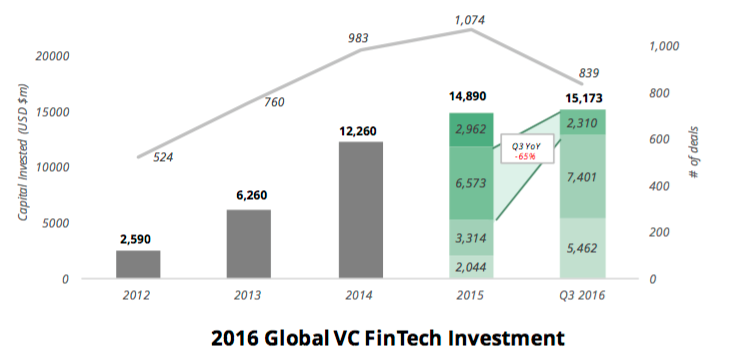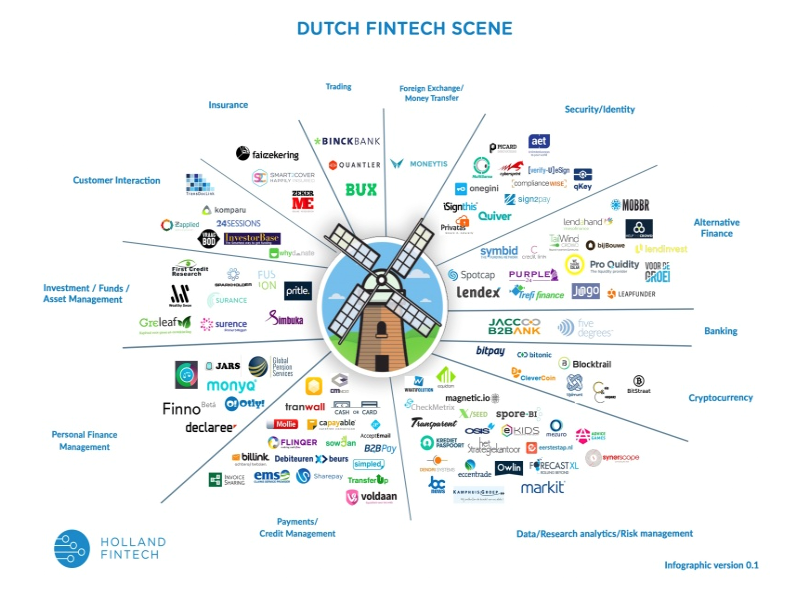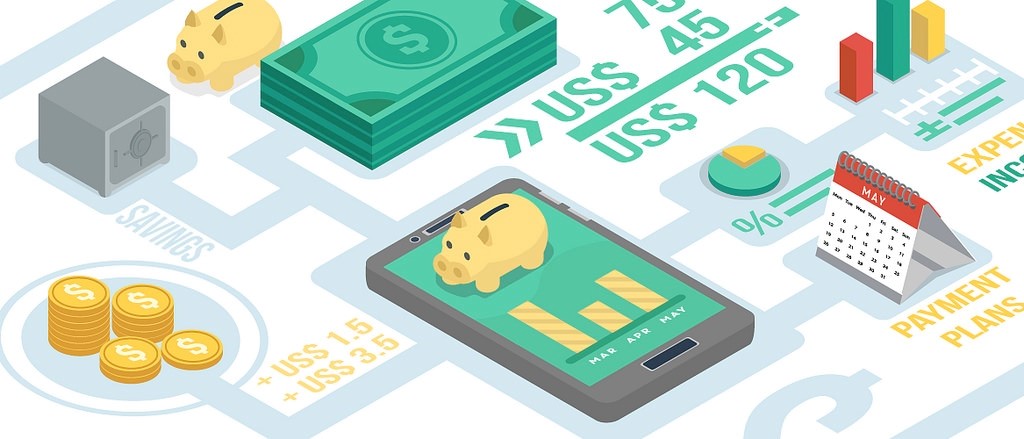| 2-2-2017 | Carlo de Meijer | treasuryXL |
 We found this article of our expert Carlo de Meijer and wanted to share it with you. This is the second part of this article, after Part I, and a slightly shorter version than the original.
We found this article of our expert Carlo de Meijer and wanted to share it with you. This is the second part of this article, after Part I, and a slightly shorter version than the original.
A year ago central banks were looking at the blockchain technology, mostly because they wanted to understand what private banks were talking about. The central banks are now embracing the blockchain technology to revamp their own infrastructures. Major central banks worldwide have spent the past year organising their own working groups dedicated to exploring blockchain technology and digital currencies. They thereby try to work out answers to the big questions: how would turning its cash digital affect the economy and financial stability? And determine whether the technology would be robust enough to stand up to hackers.
Central banks and blockchain experiments
Central banks are now even experimenting with digital currencies. A growing number have made public their efforts in the digital currency and blockchain spaces. Several – and really the most enthusiastic – central banks, including the Bank of England, the Banque de France, the People’s Bank of China, the Bank of Canada, the Central bank of Russia, the Dutch central bank, and the Federal Reserve in the US, are exploring the concept of issuing their own blockchain-based digital currency. Countries like Barbados, Senegal and Tunisia even introduced their block-chain-based digital currency. Other central banks have expressed stated their intent to develop interbank payment systems based on a blockchain. The European Central Bank recently announced a new research undertaking in partnership with the Bank of Japan. And last month the US Federal Reserve released its first major research paper on blockchain.
Tour de Table
What are all those various central banks doing. In an alphabetical order we will investigate the various initiatives.
Argentina
The Argentinian government and Central Bank authorities are focusing on finding innovative solutions. They have asked the blockchain community to join efforts to “eradicate financial exclusion, transfer the financial industry, promote financial opportunities and reduce inflation”.
The Central Bank of Argentina in narrow cooperation with the Ministry of Production and the Innovative Ministry organised the “Financial Innovation Hackathon” in November last year. On the first day of the hackathon, central bank vice president, Lucas Llach, talked about how blockchain could be a source of innovation in the financial industry. Though Mr. Llach said that its focus now is to work on improving new payment methods, he however added:
Australia
The blockchain issue is also on the radar of the Reserve Bank of Australia. Its head of payments, Tony Richards, said in February last year the RBA “has not reached a stage where it is actively considering this but in the more distant future it is even possible that we may see a digital version of the Australian dollar”. In a recently published paper the RBA however expressed a reserved view on the role blockchain and distributed ledger technology may play in the equity market in the short and medium term. The RBA paper highlights challenges associated with the transition to a new market blockchain-based structure including risks and technical challenges.
Barbados
In a sense, money issue on a blockchain is already happening on the island of Barbados. Early last year tech startup Bitt launched a blockchain-backed Barbadian Dollar, with the support of the country’s Central Bank. The Barbados central bank approved issuance of digital representations of the Barbadian dollar, each equalling a dollar issued by the Central Bank of Barbados, using blockchain. The approved platform, operated by tech startup Bitt, allows users to transact with each other. The ultimate goal is to digitize all the different fiat currencies of the Caribbean region in the hopes of providing the citizens a service that enables them to instantly send money anywhere.
Canada
The Central Bank of Canada last year teamed up with the country’s five largest banks and the R3CEV banking-backed consortium for the “Project Jasper” to create a blockchain enabled currency. In a simulation run last summer, the central bank issued so-called CAD-Coins on to a Ethereum blockchain platform. The banks used the CAD-Coins to exchange (fictional) money in the same way they normally do at the end of each day to settle their master accounts. A great deal of testing however is still necessary before the Bank of Canada can decide whether distributed ledger technology is “ready for the real world”.
China
China’s central bank is looking to recruit blockchain experts to study the technical architecture of digital currencies. The central bank has been working to create and issue a digital currency for years in order to replace cash, the bank’s governor, Zhou Xiaochuan, has said previously. Blockchain technology is among the systems it has examined, such as a series of other digital ledgers that can be reconciled efficiently. The central bank would still retain control over the country’s money supply. A timetable for the launch of China’s sovereign digital currency has not been announced, as of yet.
Denmark
The central bank of Denmark plans to issue blockchain-based E-krone as its reserve currency. The central bank says “blockchain technology, or a variety of that, for example” would be an obvious model to use for virtual currency. Governor Lars Rohde says pros include lower transaction costs. Using such a virtual currency would also make crime harder and improve financial oversight. But when it comes to the societal implications of switching to such a model, Rohde says the Danish central bank still has “more questions than answers.”
Europe
The European Central Bank and Bank of Japan agreed to launch a joint research project to study potential use cases of blockchain technology for market infrastructure. This initiative comes after the ECB revealed that “it is open to taking a closer look at exploring the potential for blockchain technology as a means to further innovation among central banks around Europe”. The bank is “toying with the idea” of tapping distributed ledger technology, among other options, for its renovation of the Target2 real-time gross settlement system and Target2-Securities platform. If this is to happen, more research into the technology is needed, prompting a collaboration with the Bank of Japan which will see findings released next year.
Finland
Also the Bank of Finland joined the growing list of worldwide central banks interested in blockchain technology. Finland’s central bank, collaborating with the Ministry of Finance, held a seminar in November, aimed to discuss “blockchain technology’s risk and rewards in order to forward innovation in the country’s economy”. They thereby gathered together with the country’s leading researchers from universities, think-tanks, and various industries, to discuss the possibilities offered by distributed ledgers.
France
The Banque de France, the country’s central bank, has revealed details about a blockchain experiment for the identification process within the Single Euro Payments Area (SEPA). As well as security reinforcement, this experiment aims at exploring possible consequences of decentralised ledger management functions of SEPA Credit Identifier. The first testing was carried out in July last year in cooperation with the IT-startup Labo Blockchain, a group of French banks, and Deposits and Consignment Fund (Caisse des Dépôts et Consignations). For the experiment, the bank provided the participants with necessary software elements to be installed in external clouds or in their trial IT systems. The central bank stated that a “comprehensive assessment” will be carried out in the coming months to understand the results of the experiment. During January 2017, more details of the experiment will be revealed at a conference organized by the French Payments Committee in Paris.
Germany
The Bundesbank, jointly with Deutsche Börse, is testing the functional prototype of a blockchain-based system for the trading and settlement of securities. Designed to provide the technical functionality for the settlement of securities in delivery-versus-payment mode for centrally-issued digital coins and the pure transfer of either digital coins or digital securities alone, the two institutions plan to develop the prototype further over the next months so that they can analyze the technical performance and the scalability of this kind of Blockchain-based application.
Some of the features of the prototype presented include its capability to be used for blockchain-based payments and securities transfers and the settlement of securities transactions against both instant and delayed payment; and its ability to maintain confidentiality/access rights in blockchain-based concepts on the basis of a flexible and adaptable rights framework. It can also enable the general observance of existing regulatory requirements; identify potential to simplify reconciliation processes and regulatory reporting; and implement a concept based on a blockchain from the Hyperledger Project. It is also capable of settling basic corporate actions such as coupon payments on securities and the redemption of maturing securities.
Hong Kong
Hong Kong’s de-facto central bank, the Hong Kong Monetary Authority (HKMA) intends to launch an innovation hub that will test blockchain and distributed ledger solutions. The HKMA has begun work on the initiative with the Hong Kong Applied Science and Technology Research Institute (ASTRI), an initiative founded by the government to enhance its competitiveness in technology.
The Hong Kong Monetary Authority (HKMA) recently has published a new white paper on distributed ledger tech. The HKMA produced the paper in partnership with ASTRI. The white paper release is only the first step in a wider process, HKMA chief executive Norman Chan said the government is planning further research. And ASTRI is looking to publish a follow-up paper sometime in the middle of next year, building on its past findings and exploring “whether some of this work can be put into action”.
India
The Institute for Development and Research in Banking Technology (IDRBT) established by the Reserve Bank of India – India’s central bank – recently explored blockchain applicability to the Indian banking and financial industry by conducting a workshop with bankers, academicians, regulators and technology partners. The participants produced a White Paper detailing the areas of adoption in the financial sector in India. The Institute also attempted a proof-of-concept on applying blockchain technology to trade finance with the participation of banks, National Payments Corporation of India and a solution provider.
Japan
The Bank of Japan – the county’s central bank – is showing increased interest in blockchain and distributed ledger technology. Accordingly, the staff in the Payment and Settlement Systems Department of the Bank are deepening their understanding of new technologies by test-driving distributed ledgers. These trails by the bank’s staff simply aim to understand the mechanics of DLT, rather than (already) applying it to the Bank’s own liabilities or its payment and settlement systems. Considering the Japanese government and the central bank’s optimism towards the blockchain technology, it is highly likely that they will lead various projects to help banks integrate blockchain platforms in their existing systems.
Netherlands
The Dutch Central Bank (DNB) is exploring blockchain technology as a way to create a permanent digital replacement of cash. The DNB set up a successful three-months trial to run an experimental virtual currency derived from blockchain software, DNBCoin, but nick-named Dukatons (after a 17th century silver coin used in the Netherlands). This DNBCoin could end up being the digital currency issued by the Dutch central bank. Most of the details regarding this project however remain still unknown for the time being.
The Dutch Central Bank has also revealed plans to prepare an experiment aimed at assessing if an entire financial market infrastructure (FMI) can be built on a blockchain, that is much more difficult to hack. The experiment envisions how an FMI’s internal operations could be distributed among participating nodes. To hack and disturb the market infrastructure an attacker would need to gain more than half the computing power running the nodes.
Nigeria
Concerned about the rapid growth of blockchain experiments all over the world, Nigeria’s Deputy Governor of the Central Bank of Nigeria has “sounded the alarm” for relevant agencies to begin to take the disruptive technology more seriously. Speaking at an event organized by the Nigeria Electronic Fraud Forum (NeFF), Deputy Governor Adebayo Adelabu described the “blockchain revolution as a “swim or sink” situation. He noted the need for regulators and operators in the Nigerian financial system to be well informed and not left out in the blockchain technology.
For that reason the Central Bank of Nigeria (CBN) and the Nigeria Deposit Insurance Corporation (NDIC) have instituted a joint committee to look into the effects of the crypto currency and other blockchain technology and its effect on the Nigerian economy.
Russia
In February last year the Bank of Russia – the Russian central bank – established a ‘working group’ to study blockchain technology, in an effort to understand and look for the viability of its real-world applications in the Russian financial market. By April, a report revealed that the Central Bank was considering allowing banks to record and store data of all their transactions on a blockchain. And in July 2016, the Bank of Russia set up a consortium of banks that counted as Russia’s first blockchain consortium.
The Bank of Russia has developed and tested on an Ethereum-based blockchain prototype called ‘Masterchain’ for financial messaging, to be used by banks in Russia.A number of country’s largest banks and financial institutions took part in developing the Masterchain prototype, including Sberbank, Alfa Bank, Bank Otkritie, Tinkoff Bank, and Qiwi. The ‘Masterchain’, as explained by the central bank, is ‘a networking tool’ for participating members using blockchain technology. The platform enables for “prompt confirmation of data actuality” to a transacting customer. The innovation also makes instant communication possible between counterparties among the platform, while assuring confidence in financial transactions.
Senegal
Senegal has recently become the third country in the world (next to Barbados and Tunisia) to introduce a digital currency based on blockchain technology. Named eCFA, the digital currency will be legal tender and is to circulate alongside the current fiat currency, CFA Franc, is. Senegal’s eCFA comes from a partnership by Banque Régionale de Marchés (BRM) and eCurrency Mint Limited, where BRM will issue the digital tender currency, the eCFA, in compliance with e-money regulations of the Banque Centrale des Etats de l’Afrique de l’Ouest (BCEAO), the Central Bank of the West African Economic and Monetary Union (WAEMU). While the eCFA will use the blockchain to keep track of transactions, it will be issued and regulated solely by the central bank, but confer the benefits of transparency and cryptography to prevent counterfeiting and fake transactions. After Senegal, WAEMU will introduce the eCFA in Cote d’Ivoire, Benin, Burkina Faso, Mali, Niger, Togo and Guinea-Bissau.
Singapore
The Monetary Authority of Singapore (MAS), the country’s central bank, and the Singapore stock exchange are to launch a pilot project called Utility Settlement Coin with eight local and foreign banks to test the use of blockchain technology for interbank payments. Singapore’s DBS Group, HSBC, Bank of America, JPMorgan, Credit Suisse, and Bank of Tokyo-Mitsubishi UFJ are all working with MAS on the program with support from the global banking consortium R3CEV. R3 blockchain research lab and BCS Information Systems will support the project.
Under the pilot system participating banks will be able to pay each other directly with this digital currency instead of first sending payment instructions through MAS, and banks will be able to later redeem the digital currency for cash. Banks will thereby deposit cash as collateral with the MAS in exchange for digital currency issued by the central bank.
Eventually, the project could result in a payment system for participants to transact in different global markets round-the-clock that are today limited by time zone differences and office hours. Participating banks The next phase of the project will involve transactions in foreign currency, possibly with the support of another central bank.
South Africa
The central bank of South Africa is also looking into the applicability of the blockchain technology in the industry of finance. The Reserve Bank of South Africa’s governor, Lesteja Kganyago, publicly expressed the organization’s “openness” towards blockchain technologies and their intent to help startups come up with innovative solutions using the technology.
The central bank is particularly concerned with the technological and security-related issues blockchain platforms may present. Both the government and central bank of South Africa agree that the blockchain technology and cryptocurrencies need further guidance and assessment from the government before it can be offered to organizations in the public sector.
South Korea
The Bank of Korea has published a report titled “Present Status and Key Issues of Distributed Ledger Technology” detailing policy issues which could hinder the growth of distributed ledgers and also estimates the cost-cutting effect of the application of the blockchain technology. The report mentions that blockchain implementation could save the bank about KRW 107.7 billion (16% of its total costs).
The Bank of Korea is considering implementing a supernode to help mitigate privacy concerns, should it seek to adopt distributed ledger technology. Furthermore, the report recommends implementing the technology for major settlement services such as the BoK wire+ (Bank of Korea settlement system). Addressing privacy issues, according to the report, would require PKI based Key Exchange, Supernode (Central Manager) – who will have access to transaction information along with the trading partner, and Confidential Transactions which will be applicable to distributed systems and maintain anonymity and make deals with parties to access deal information.
Sweden
Riksbanken, Sweden’s central bank, is also thinking about using the blockchain to issue digital money.
The plans to issue an “eKrona”, a blockchain-based digital version of the Swedish Krona, was recently disclosed by the deputy governor of the Riksbank Mrs. Cecilia Skingsley. It is however still in discussions whether digital currencies should complement notes and coins, or replace them. The Riksbank currently is “in the early stages of exploring the idea and is launching a project to explore various possibilities.” Right now it is too early to hope for a quick introduction of the eKrona. Several issues – like traceability, interest, and delivery – have to be examined. Also, the Riksbank does not know which technology it will use to build the eKrona at present. The blockchain is one of the several technologies the Riksbank will look at.
Switzerland
At the kick off at the SIBOS conference last October in Geneva, the president and chairman of the board of Switzerland’s central bank Mr. Jordan described a financial system “turned on its head” by blockchain and distributed ledgers.
“Such systems could render the reconciliation of transactions and balance data between banks and the third-party system obsolete. The paradigm seems to have been turned on its head. Decentralization, not centralization, now appears to promise the greatest efficiency gains.” Jordan said the Swiss National Bank is now in discussions with market participants, regulators and other central banks about what to do next.
Tunisia
Tunisia is one of the early adopters of a blockchain-based digital currency. Late 2015, Tunisia had over half a million people using its digital currency, eDinar. The country’s post office, La Poste Tunisienne, then announced it would partner with Monetas and DigitUs to integrate the country’s digital currency with blockchain technology. This digital currency is issued solely by the Tunisian central bank.
Ukraine
Ukraine is now also exploring the potentials of an electronic money concept. As part of the nation’s Cashless Economy project, the National Bank of Ukraine (NBU) is to issue a blockchain-based digital version of the Hryvnia by next year. At first the currency will circulate alongside its physical version.
United Kingdom
Within the Bank of England, a team is already considering what a central bank-issued digital currency could mean. They have worked with PwC’s blockchain team in Belfast to help them develop a Proof of Concept and explore blockchain.
The Bank of England has released a significant Blockchain paper “Macroeconomics of central bank issued digital currencies,” which discusses the macro-economic consequences of a central bank making a digital form of cash available to the general public. In the model, digital cash is created only when the central bank purchases bonds from households or investors. This central bank digital currency, implemented via distributed ledgers, would compete with bank deposits as medium of exchange. However, banks would still be able to create money.
The model suggests that the introduction of digital cash would have some key benefits: it could boost GDP by around 3%, due to “reductions in real interest rates, in distortionary tax rates, and in monetary transaction costs”, it could give the central bank (via countercyclical CBDC price or quantitative rules) a second monetary policy tool to stabilise the economy; and, it could improve financial stability.
United States
The Federal Reserve is also taking a much closer interest in blockchain and what it can offer to the financial sector. The Federal Reserve released a report on Distributed Ledger Technology (DLT) or blockchain early December last year. The document reviews the potential and challenges for the new technology to disrupt and benefit financial services.
The Fed believes utilisation of DLT will become clearer as the technology matures. They further state:
“The driving force behind efforts to develop and deploy DLT … is an expectation that the technology could reduce or even eliminate operational and financial inefficiencies, or other frictions, that exist for current methods of storing, recording, and transferring digital assets throughout financial markets.”
Without making any grand predictions the authors believe DLT adoption will require future research to better understand the impact to the financial industry. Challenges to mass adoption include a list of risk, business and technical hurdles.
If you would like to see the full article please click here.

Carlo de Meijer
Economist and researcher
 In July 2016 our expert Pieter de Kiewit wrote an article about bankers who want to make a transfer into corporate treasury. With all the news about major banks laying off huge numbers of staff and the recent news that ABN AMRO asks 30 top managers to leave the bank or accept demotion, we believe that this topic is still very relevant and worthwhile to be published. Pieter de Kiewit wrote his blog based upon his observations working as a treasury recruitment consultant having meetings with many of them.
In July 2016 our expert Pieter de Kiewit wrote an article about bankers who want to make a transfer into corporate treasury. With all the news about major banks laying off huge numbers of staff and the recent news that ABN AMRO asks 30 top managers to leave the bank or accept demotion, we believe that this topic is still very relevant and worthwhile to be published. Pieter de Kiewit wrote his blog based upon his observations working as a treasury recruitment consultant having meetings with many of them.

 The last two Thursdays, the PowertoPay, SWIFT and TreasuryServices Treasury Seminar was held in Montfoort and Antwerp. We’re happy to say that it was a success! We got a lot of positive feedback during and after the seminars. Both had the same content but were hosted on two different days. The first one was held in Antwerp, Belgium on the 2nd of March in an old monastery (Elzenveld). The second one was held in Montfoort, The Netherlands on the 9th of March in the Heeren of Montfoort.
The last two Thursdays, the PowertoPay, SWIFT and TreasuryServices Treasury Seminar was held in Montfoort and Antwerp. We’re happy to say that it was a success! We got a lot of positive feedback during and after the seminars. Both had the same content but were hosted on two different days. The first one was held in Antwerp, Belgium on the 2nd of March in an old monastery (Elzenveld). The second one was held in Montfoort, The Netherlands on the 9th of March in the Heeren of Montfoort. 



 FinTech is a term that is becoming popular in the financial world. Only one third of the financial experts know what this means and understands what consequences it has for their business. How this innovation is currently changing the ecosystem of money, is still relatively unknown.
FinTech is a term that is becoming popular in the financial world. Only one third of the financial experts know what this means and understands what consequences it has for their business. How this innovation is currently changing the ecosystem of money, is still relatively unknown.








 We found this article of our expert Carlo de Meijer and wanted to share it with you. This is the second part of this article, after
We found this article of our expert Carlo de Meijer and wanted to share it with you. This is the second part of this article, after 
 After having examined the detailed measures of the PSD2 in my
After having examined the detailed measures of the PSD2 in my
 François de Witte – Senior Consultant at
François de Witte – Senior Consultant at 

